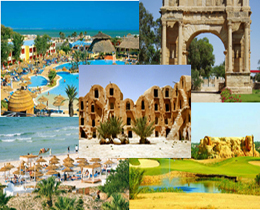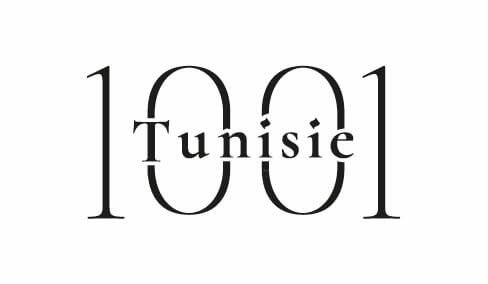
This new unit, whose creation was undertaken under the aegis of the Ministry of Tourism, will oversee an evolving sector. In the past, Tunisia was largely based on its resorts to attract followers of package tourism, mainly from France, Italy, Germany and the UK. In fact, 80% of visitors come from six countries, recently said Elyes Fakhfakh, Minister of Tourism,to the international media.
However, this strategic orientation (tourism package) was associated with a relatively low level of visitor spending, especially compared to other destinations in the region, such as Egypt or Morocco, which limited income sector . This effect has been exacerbated by the decline in arrivals, which fell by some 2.5 million to $ 4.5 million in 2011 after the popular uprising that led to the fall of former President Zine Al Abidine Ben Ali. The unrest in neighboring Libya, which previously was an important market for the Tunisian hospitality industry, have exacerbated the difficulties of the sector, while the European debt crisis has dampened demand.
Speaking to the Reuters news agency in April, Mr. Fakhfakh was confident that the figures would improve in 2012, without achieving the 7 million arrivals recorded in 2010. The latest figures communicated by the research Department of the Ministry of Tourism show that industry revenues start to grow, after falling 1.78 billion dinars (892.8 million euros) in 2010 to 1.11 billion dinars (554.8 million of euros) in 2011. as of July 31, tourism revenues had again reached 1.53 billion dinars (€ 765 million).
The attendance of foreign tourists also started to rise, since 3.24 million tourists had visited Tunisia in late July, an increase of 34% from the 2.42 million arrivals recorded in the first half of 2011. This result remains below the 3.97 million tourists who visited the country between January 1 and July 31, 2010.
Tourism remains the predominant activity in the country; in 2011, the travel and tourism sector directly contributed 6.6% of gross domestic product (GDP), a rate that is expected to reach 8% this year, according to the World Travel and Tourism Council (WTTC). The direct and indirect contributions of the sectors represented 14.3% of GDP in 2011, according to the WTTC. The sector is also a major source of employment, since 415 500 people worked there in 2011, or 12.9% of total employment.
However, to maintain the expected level of growth, the public sector and the private sector will have to operate a diversification to enhance the overall attractiveness of the country, not only in terms of markets but also in terms of activities. Niche tourism activities, such as health tourism or ecotourism, offer significant growth potential, particularly in the premium segment, where thalassotherapy centers have already an impact. Similarly, tourists from non-traditional markets, such as Russia and China, which previously represented only a small proportion of foreign tourists in Tunisia, were more numerous on other Mediterranean markets such as Egypt and Turkey, underlining the growth potential of the Tunisian tourism sector.
The previous government had taken a number of measures in this regard: € 28 million were allocated each year to finance advertising campaigns, while new hotel facilities classification systems had been set up to promote the improving housing standards.
According to Mr. Fakhfakh, the country is aiming to diversify the existing tourism offer to include adventure holidays in the desert, spa, or golf, and focus more on the different regions of countries, including deserts, forests and Roman and Islamic archaeological sites.
In June 2012, Tunisia hosted the first exhibition of alternative tourism in the village of Ken, located near Bouficha in the governorate of Sousse. Habib Ammar, Director General of the National Office of Tunisian tourism, told Agence France Presse in Tunis that the show had been created at the initiative of the Association promotion of alternative tourism in Tunisia (APTAT ). Alternative tourism’s main objective is to reduce dependence of Tunisia against seasonal visitors, developing a diverse tourist offer to attract visitors throughout the year.
The Minister of Tourism is also working with other North African countries to encourage visitors from distant countries or regions, including Asia and the United States, to book multi-destination trips, for example tours through the historic Roman sites in Tunisia and North Africa.
The country also hopes that the negotiations with the European Union (EU) agreement on “open skies” will offer the sector a more stable position in the future. The agreement “open skies” is supposed to allow foreign airlines and low-cost to more easily use the airports. In Morocco, the signing of a similar agreement in 2006 resulted in an increase in low-cost flights to cities such as Marrakech, although some companies have had difficulties to cope with the increased competition. Tunisia hopes that the signing of an agreement “open skies” will have the same effect on traffic.
According to Mr. Fakhfakh, negotiations should last between six months and one year. Once an agreement is reached, the new Department of the Ministry of Tourism in charge of tourism management will ensure its implementation.
The boundaries of the tourism package and cheap, traditional pillars of Tunisian tourism, are a long-standing evidence for the sector. For a number of years, private operators are pushing to strengthen the country’s attractiveness to visitors upmarket and niche segments, with some success. However, the fall in visitor numbers and the limited interest from major markets make it even more urgent diversification efforts undertaken by the Government to enhance the attractiveness of the Tunisian tourism sector.
Oxfrord Businees Group
{mainvote}


 َAbonnez-vous
َAbonnez-vous

